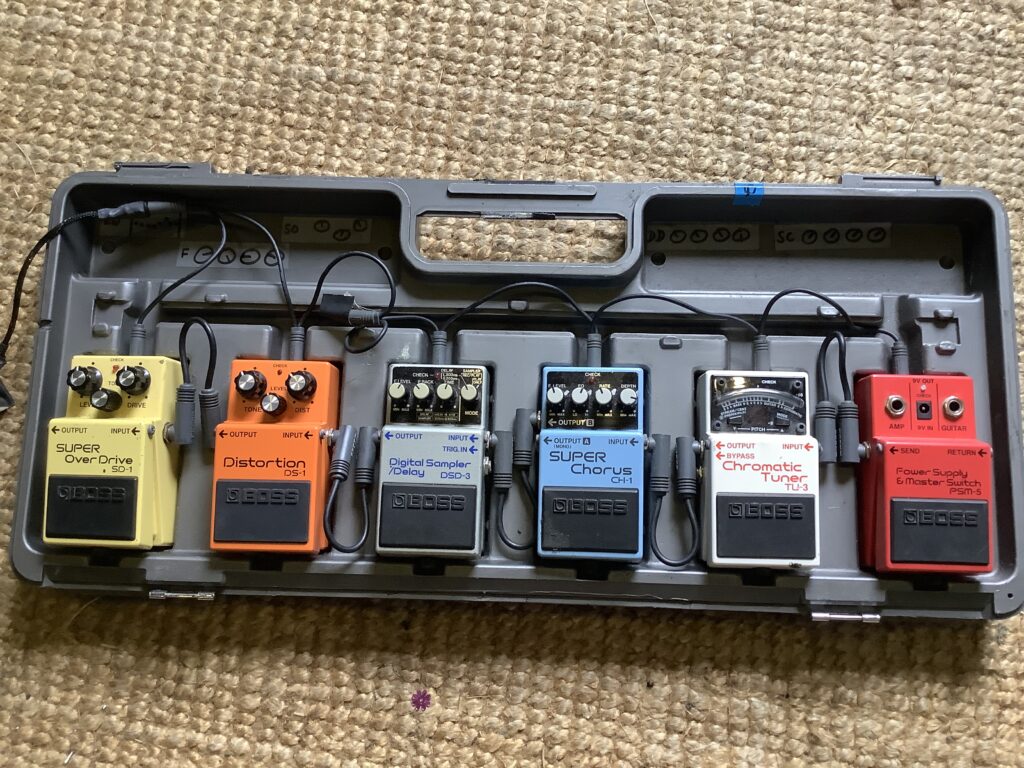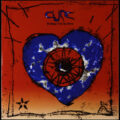Former Lush frontwoman (and current Piroshka frontwoman) Miki Berenyi has been in the news the last little while not for anything she’s done musically – the last Piroshka record Love Drips and Gathers came out in Summer of 2021 – but for her written recollections of what she’s done musically.
Fingers Crossed: How Music Saved Me From Success came out at the end of September, and gathered a lot of praise for its honest recounting of Berenyi’s youth and experiences as a woman fronting a band through both the eras of shoegaze and Britpop. I’ve not yet read it – it hasn’t been published in North America yet – but when I’m able to get a hold of a copy it’ll go straight on top of the dusty stack of music books I intend to read someday.
As a result of the attention the book has gotten, she’s done a lot of press but obviously the interview of most interest to me was one that came up through Guitar World last week, wherein she talks about her band experiences through the lens of her songwriting process and her instruments. I don’t recall Lush getting more than a short blurb or two through the entire ’90s from any of the guitar mags, so a feature like this is very welcome, if 30 years or so overdue.
On how Berenyi and Emma Anderson composed their respective guitar parts:
On Lush albums, the guitars are not distinctly right and left channel, or lead and rhythm parts. They weave together and create intricate melodies. Did you and Emma work out those parts together?
“No, because one person would write the whole thing, even those guitar parts. Literally whoever’s credited as the songwriter wrote the whole thing. All the parts, lyrics, everything. So, the only time I would get a credit on Emma’s song is if I’d written the lyrics. I mean, you’re right. We just had rhythm guitar. Neither of us was a virtuoso lead guitarist. Both of us started playing our instruments because we were in the band. It was literally like, work out a part and then learn to play it.
Miki Berenyi
Miki Berenyi details the songwriting tension that fueled Lush’s landmark ’90s releases and the twice-broken Gibson 12-string that helped define her sound @ Guitar World
When discussing how Robin Guthrie’s effects-laden production on Spooky affected her personal gear setup, Berenyi admits she’s used the same five Boss pedals since Lush formed in 1990:
To be honest, I’ve got like five pedals and they’re the same ones that I had in 1990, so whatever mix comes out of those. Plus, my guitar is a 12-string, so you don’t want to lose all of the actual 12-stringness of it. I think with Emma’s stuff, it was more important to have lots of effects and Robin came up with a lot of that stuff.
Miki Berenyi
Miki Berenyi details the songwriting tension that fueled Lush’s landmark ’90s releases and the twice-broken Gibson 12-string that helped define her sound @ Guitar World
And if you’re curious just what those five pedals are, KEXP got a look at her pedalboard when she and Moose McKillop were discussing the second Piroshka record. All Boss, and you could rebuild her exact rig for under $500 today including the plastic pedalboard. Guitar Geek got it right all those years ago although they seem to have gotten the order wrong – that’s a bit of an unconventional signal path, but what has convention done for anyone lately?
About her setup, she says:
My Boss pedal board and setup is the same as it was for Lush, back in the ’90s. I don’t like to mess about too much with the sound in order to preserve the 12-string’s unique quality. Too many effects and you may as well be playing a 6-string. My role is to thicken out the sound behind the more complex lead guitar, so overall it’s a case of “less is more” — delay and chorus to add ambience, overdrive and/or distortion when a song needs a bit of oomph to cut through or to sizzle around the more powerful drums.
Miki Berenyi
Feedback: Miki Berenyi & KJ ‘Moose’ McKillop of Piroshka @ KEXP

With respect to her actual guitars, she talks about a few instruments she went through before settling on the 12-string Gibson ES-335 that would be her signature guitar for the following decades:
I wish I hadn’t sold that Jaguar, because I do think it was a lovely guitar. It just wasn’t right for what we were trying to do. The Telecaster was just something to learn on and Fenders have got a much thicker neck, and the action was so high on it I used to slice my fingers to ribbons. A lot of those vintage guitars I found so much easier to play. The Jaguar was easier to play, and then when I was looking at 12-strings the Gibsons have got a really slim neck.
Miki Berenyi
Miki Berenyi details the songwriting tension that fueled Lush’s landmark ’90s releases and the twice-broken Gibson 12-string that helped define her sound @ Guitar World
And to KEXP, she talks about the Fender Stratocaster 12-string she’s moved on to in Piroshka:
I’m really not much of a tech fiend when it comes to guitars/effects. Having found a formula that works, I’ve stuck with it. I bought my first 12-string – a vintage Gibson 335 – back in 1989 and it became part of the signature Lush sound. I switched to Fender 12 for Piroshka, just to change things up a little. It has a wider neck, which makes it trickier to play live (guitars generally aren’t designed with women’s smaller hands in mind and I still love my Gibsons for their lovely slim necks), but the sound is brighter.
Miki Berenyi
Feedback: Miki Berenyi & KJ ‘Moose’ McKillop of Piroshka @ KEXP
I love hearing about the absolutely utilitarian equipment that first-generation shoegazers used in the ’90s, then looking at the absurd collection of gear people like me have. It’s the best.

